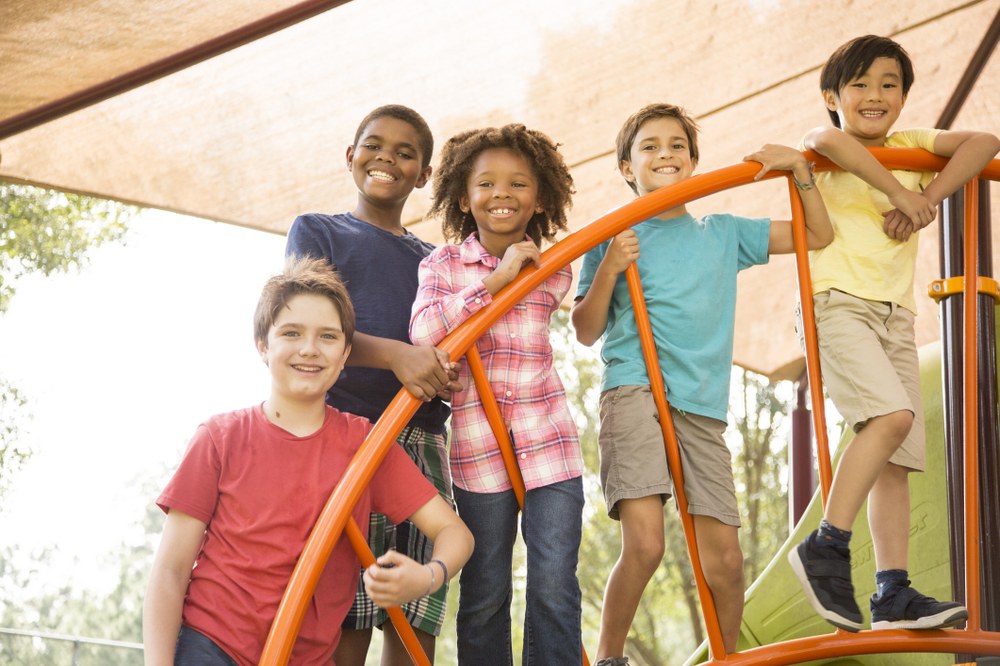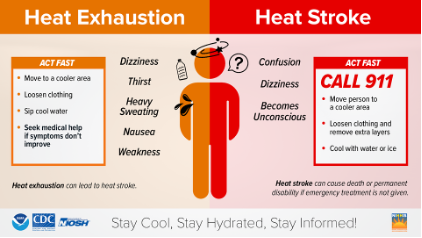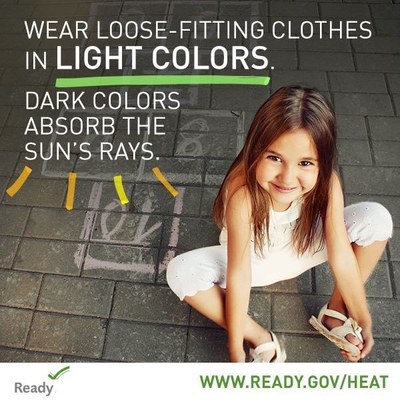Posted: May 12, 2025
Rising heat temperatures are occurring more frequently and lasting longer. Extreme heat awareness falls under the larger umbrella of climate awareness. Climate awareness is understanding how the effects of a changing climate—the long-term shifts in temperatures and weather patterns—impact children and how we can ensure children’s healthy and equitable development.

Young children in a shaded playground
Why are Children Vulnerable?
Children have unique behaviors that make them more vulnerable than adults: they spend more time outdoors and they rely on others to be kept cool and hydrated. Children also have physiological differences: their bodies can warm up 3-5 times faster and they don't sweat as much as adults (Robison, 2024).
Time spent outdoors benefits everyone, but not when it’s too hot. On a hot sunny day, shaded surfaces remain close to air temperature, while paved surfaces can be 50–90°F hotter (Early Childhood Scientific Council on Equity and the Environment, 2023). These heat-trapping areas, often called heat islands, are areas with a high concentration of concrete, pavement, asphalt, and a lack of shade, which can result in significantly higher temperatures. Adapting these areas to create more green spaces, such as adding trees, gardens, and shade elements, can reduce temperatures.
Extreme Heat Stresses Us Out (and Cool Solutions Can Help!)
Extreme heat is stressful for both children and adults. The brain detects extreme heat as a threat to well-being, which activates the stress response system. During pregnancy and early childhood, excessive activation of this system can disrupt development of emotional regulation circuits (Early Childhood Scientific Council on Equity and the Environment, 2023). A recent RAPID Survey Project highlights that a third of providers (31 percent) say that extreme heat makes them more stressed and impacts their work environment or ability to provide child care (RAPID, 2024). Understanding heat awareness and solutions can support you and the children you care for!
Keep Cool! Six Heat Solutions to Put into Practice
- Use the Heat and Health Tracker— Enter your zip code in the CDC’s Heat and Health Tracker for local heat risk forecast and health information to better prepare for and respond to extreme heat events. The Heat Index is a measure of how hot it really feels when relative humidity is factored in with the actual air temperature.
- Know the difference between heat exhaustion and heat stroke

- Develop heat plans—Dedicate time to develop heat plans with peers, families, and the community BEFORE hot weather arrives. Plan for power outages, ensure air conditioning systems work, and build a heat emergency kit. Use the following to spark your thinking:
- Ensure children are well-hydrated—Children should start drinking before they get thirsty and continue to drink water throughout the day. Schedule hydration breaks for kids to ensure they are drinking enough water (Mangine, 2025).
- Dress in light, single-layer clothes

- Adapt environments and routines—Adjust outdoor schedules to occur during cooler times of the day. Adapt spaces to support cool, shady places by adding elements such as trees, shade sails, and willow huts to protect children as they play and learn outdoors. Access tips in the handouts below:
References
RAPID. (2024). Heating up: Extreme weather is increasing stress for parents and child care providers. Center on Early Childhood, Stanford University.
Early Childhood Scientific Council on Equity and the Environment. (2023). Extreme Heat Affects Early Childhood Development and Health: Working Paper No. 1.
Mangene, R. (2025). Three Ways to Keep Your Kids Cool. Children’s Primary Care Medical Group.
Robiou, G. (2023). Protecting Children from Extreme Heat. United States Environmental Protection Agency (EPA).

